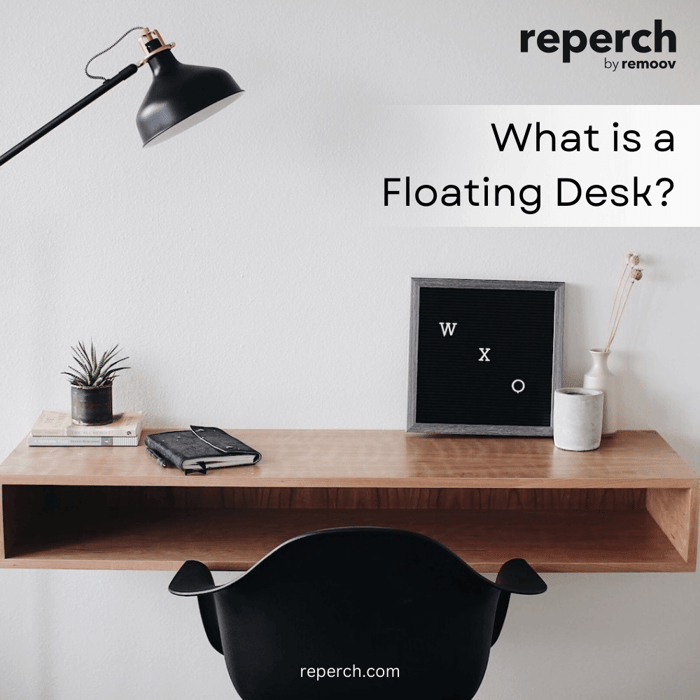In a world where home offices and small living spaces are becoming the norm, furniture that maximizes both utility and style is essential. One piece that perfectly fits this mold is the floating desk. But what exactly is a floating desk, and why are so many people opting for them? In this guide, we’ll explore everything you need to know about floating desks, including their benefits, types, and how to choose the best one for your needs.
Understanding the Floating Desk
A floating desk is a type of desk that is mounted directly to the wall, often giving the illusion that it’s “floating” off the ground. Unlike traditional desks with legs, floating desks are usually secured to the wall with brackets, cleats, or even suction cups. This design not only saves floor space but also creates a sleek, modern aesthetic that complements a variety of decor styles.
Types of Floating Desks
Floating desks come in various forms, each with unique features to suit different needs and preferences. Here are the most common types:
Wall-Mounted Floating Desk: This is the classic floating desk, attached directly to the wall without legs. Some models include foldable designs, allowing you to fold the desk up when not in use to free up even more space.
Floating Desk with Legs: While still giving the appearance of floating, these desks include slim, streamlined legs for added support and stability. These are popular in mid-century modern designs and can be used as statement pieces in a room.
Corner Floating Desk: For those looking to maximize an unused corner, corner floating desks are an ideal option. They’re designed to fit snugly into a corner, often including built-in cubbies or shelves for storage.
Floating Desk with Storage: Some floating desks come with drawers, shelves, or cabinets integrated into the design, offering additional space for organizing office supplies, books, or decor items.
Foldable Floating Desk: These desks can be folded up against the wall when not in use, transforming into a wall-mounted storage unit or even disappearing entirely. This makes them perfect for small spaces where floor space is at a premium.
Benefits of Floating Desks
1. Space-Saving Design
Floating desks are known for their minimal footprint. By eliminating legs and mounting the desk to the wall, you free up floor space, making it an excellent option for small rooms or apartments.
2. Versatility
Whether you need a desk for working, studying, or even crafting, floating desks can be adapted for various purposes. Their clean design also makes them ideal for different areas of the home, such as bedrooms, living rooms, and even kitchens.
3. Easy Installation
Many floating desks are designed for easy installation, with some models even featuring suction cups for a tool-free setup. For wall-mounted desks, the process generally involves securing brackets or clamps to the wall, which can often be completed in under an hour.
4. Aesthetically Pleasing
Floating desks offer a modern, streamlined look that can elevate the style of any room. They’re available in a range of materials, such as wood, metal, and glass, allowing you to find a desk that complements your decor.
5. Affordable Option
Compared to traditional desks, floating desks can be quite affordable. They come in a range of prices, from budget-friendly options to high-end designer models. Because they are smaller and simpler in design, they often cost less than standard desks.
How to Choose the Right Floating Desk
When selecting a floating desk, consider the following factors:
1. Purpose
Think about how you intend to use the desk. If you need extra storage, look for a floating desk with built-in shelves or drawers. For those who need a simple workspace, a foldable or wall-mounted desk may be sufficient.
2. Material
Floating desks come in various materials, each with its own aesthetic and functional benefits. Wooden desks provide a classic look and are highly durable, while metal and glass desks offer a more modern, minimalist appeal.
3. Size and Space
Measure your space before purchasing a floating desk to ensure it will fit comfortably in your room. Consider the size of the desk's work surface and make sure it’s adequate for your needs.
4. Installation Requirements
Some floating desks require tools and hardware for installation, while others use suction cups or adhesive strips for a no-drill setup. Consider your comfort level with DIY projects and choose a desk that suits your installation preferences.
5. Budget
Set a budget for your desk purchase, as floating desks come in a range of prices. While there are budget-friendly options available, investing in a higher-quality desk can provide better durability and longevity.
Popular Floating Desk Styles
Floating desks come in various styles to suit different decor themes. Here are a few popular styles:
Mid-Century Modern: Characterized by sleek lines, thin legs, and warm wood tones, mid-century modern desks offer a vintage look that complements both contemporary and traditional interiors.
Industrial: Made from materials like metal and reclaimed wood, industrial floating desks have a rugged appeal that works well in loft-style or urban spaces.
Scandinavian: Minimalistic and functional, Scandinavian-style floating desks often feature light wood finishes and clean lines, ideal for creating a serene workspace.
Contemporary: Contemporary floating desks are often made from materials like glass and metal, providing a polished, sophisticated look.
Setting Up Your Floating Desk Workspace
To create a functional and inspiring workspace, consider these tips when setting up your floating desk:
Choose the Right Chair: Ensure your chair is comfortable and provides adequate support, as this will greatly impact your productivity and comfort.
Organize Your Supplies: Use shelves, organizers, or storage bins to keep essential supplies within reach and reduce clutter on your desk surface.
Incorporate Lighting: Good lighting is crucial for any workspace. Consider a desk lamp or install wall-mounted lighting to ensure your workspace is well-lit.
Add Personal Touches: Personalize your workspace with decor items like plants, artwork, or motivational quotes to make it feel inviting and unique to you.
Conclusion
Floating desks are an excellent solution for those seeking a space-saving, stylish, and functional workspace. With various types, materials, and styles available, there’s a floating desk to suit every need and aesthetic. Whether you’re working from home, studying, or simply need a dedicated spot for creative projects, a floating desk can help you make the most of your space and create an inspiring environment that enhances productivity and focus.
Reperch explores how floating desks maximize space and style, offering versatile and modern solutions for small home offices or living spaces. Discover the benefits, types, and tips for setting up the perfect floating desk for your needs.








